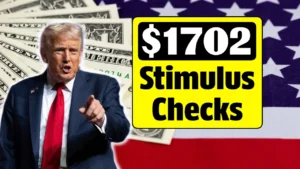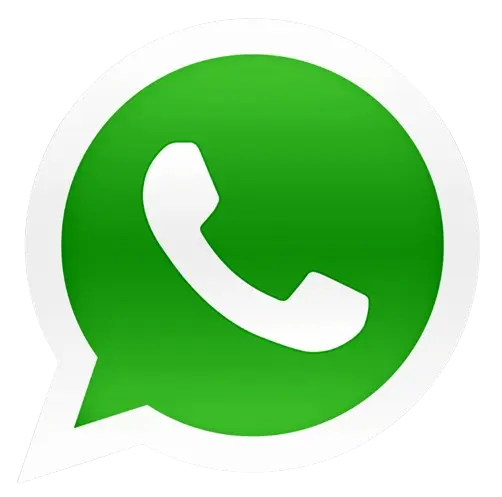IRS $1,702 Stimulus Check 2025:As inflation continues to pose a challenge for millions of Americans, the IRS’s $1,702 stimulus check has become one of the most talked-about relief measures of 2025. Many are asking the same questions: Who is eligible for this payment? When will it be deposited? And how can I check my payment status?
The Internal Revenue Service (IRS) has officially begun preparing the next round of economic aid, aimed at helping low- and middle-income families, senior citizens, and those struggling with rising living costs. Let’s break down everything you need to know about this highly anticipated payment—from eligibility to deposit timetable.
What is The $1,702 Stimulus Check?
The $1,702 stimulus check is part of a targeted economic relief effort designed to help Americans struggling with rising living expenses due to inflation, rent increases, and healthcare costs. Unlike previous stimulus checks in 2020 and 2021, this new program is not a one-size-fits-all payment. Instead, it focuses on helping those most affected by the economic downturn—particularly senior citizens, low-income families, and certain benefit recipients.
The IRS, in collaboration with the U.S. Treasury Department, is working to distribute payments via direct deposit, paper checks, and debit cards, depending on how you received your previous federal payments.
Who is eligible for The $1,702 Payment?
Eligibility for the 2025 stimulus check depends on several factors, including income level, filing status, and benefit status. According to IRS guidelines, you may be eligible if you meet the following criteria:
- Single filers with an annual income of $75,000 or less.
- Married couples filing jointly with an annual income of $150,000 or less.
- Heads of household with an annual income of $112,500 or less.
- Recipients of federal benefits, including Social Security (SSA), Supplemental Security Income (SSI), Veterans Affairs (VA), and Railroad Retirement (RRB) benefits, are automatically eligible.
- U.S. citizens and permanent residents with a valid Social Security number.
The payments will phase out gradually for higher earners, meaning individuals earning more than $80,000 and couples earning more than $160,000 will not receive the full amount.
Deposit Schedule: When will the $1,702 payment arrive?
While exact deposit dates vary depending on your situation, the IRS has released estimated payment timelines for 2025.
- Phase 1: November 15-25, 2025 – Direct deposits will begin for Social Security, Small Business Administration (SSI), and VA beneficiaries who receive regular monthly benefits.
- Phase 2: November 26-December 10, 2025 – Payments for taxpayers who filed returns with direct deposit details in 2023-2024.
- Phase 3: December 15-30, 2025 – Paper checks and debit cards will be sent to those whose bank information is not on file.
To avoid delays, the IRS recommends ensuring your banking information and mailing address are up-to-date through the official IRS portal or your My Social Security account.
How to Check Your Payment Status
The IRS will update its “Get My Payment” tool on IRS.gov to help taxpayers track their $1,702 stimulus payment. Once the system is up and running, you can log in to:
- Verify your eligibility.
- Check your scheduled deposit or mailing date.
- Confirm whether the payment has been processed.
- Update your bank or mailing information, if necessary.
You can also check the status of your Social Security or VA-linked payment through their respective portals.
Why the Payment Is Important
The new $1,702 stimulus package comes at a crucial time. Although the US economy is showing signs of improvement, inflation and rising living costs continue to burden many families.
Grocery, rent, and medical expenses have risen faster than average income growth, leaving millions of seniors and working families in financial distress. The IRS’s targeted relief aims to provide temporary stability to those most in need while also continuing to stimulate consumer spending.
For seniors relying on fixed incomes or Social Security, this one-time payment could help cover essential holiday bills, winter heating costs, or healthcare expenses.
Avoid Scams and False Information
Amidst all the buzz surrounding the $1,702 stimulus check, scammers have begun circulating fake websites and messages claiming “expedited access” or “fast deposit.”
Remember – the IRS never asks taxpayers for personal or banking details via phone, text, or social media. Always verify information directly on www.irs.gov.
And don’t pay attention to rumors from unofficial sources or social media.
Final Thoughts
The IRS’s $1,702 stimulus check for 2025 is a lifeline for millions of Americans still grappling with the effects of high prices and economic uncertainty. While not everyone will be eligible, those who are can expect much-needed financial relief just before the end of the year.
If you’re eligible, make sure your tax and banking information is accurate, keep a close eye on your IRS account, and stay alert for official announcements.
For many, this payment won’t just be a deposit—it will be a small but meaningful sign of hope in challenging economic times.
FAQs
Q1. When will the IRS send the $1,702 stimulus checks?
Deposits begin in mid-November 2025, with all payments expected to be completed by late December.
Q2. Do I need to apply for the payment?
No. If you filed taxes in 2023 or receive Social Security, SSI, or VA benefits, the IRS will process your payment automatically.
Q3. Is the $1,702 check taxable?
No, stimulus payments are not taxable income and won’t reduce your other benefits.
Q4. What if I didn’t file taxes recently?
You can use the IRS Non-Filer tool (when reopened) to register and claim your payment.
Q5. Where can I confirm updates?
Visit the official IRS website: www.irs.gov for verified news and payment schedules.

